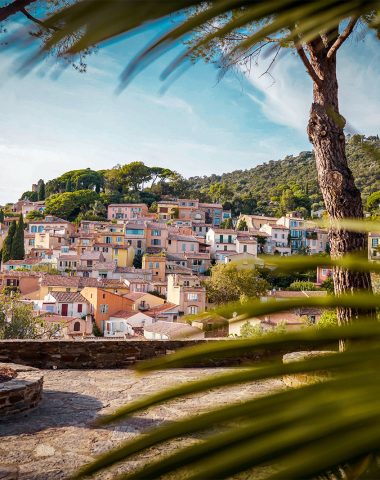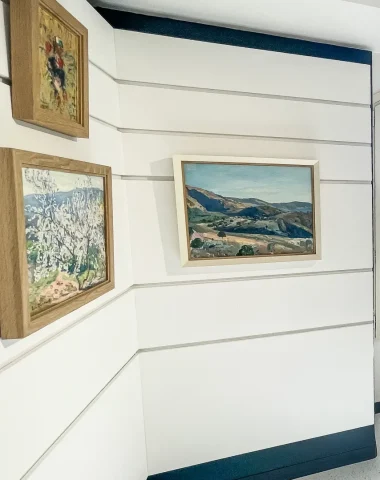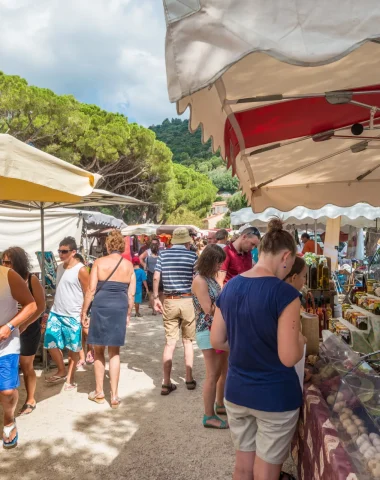Embark on a captivating journey along the Chemin des Sages, a project born from a visionary gathering of the Conseil des Sages, composed of wise individuals aged 60 and above, carefully chosen by local councilors for their wealth of experience. Inspired by the core principles of our Republican motto “Liberté, Égalité, Fraternité,” the council sought to breathe life into these ideals in the town of Bormes.
The Concept Takes Flight
A groundbreaking idea emerged during the council’s meeting—to adorn the town with phrases from renowned men and women, celebrated worldwide for their wisdom and humanism. The goal was to ignite the conscience of both passers-by and tourists, fostering a deeper connection with these universal values. To gain the support of the Mayor and the Council, the decision was made to integrate this pathway with the installation of historical plaques on the town’s iconic monuments. The members of the Conseil des Sages then meticulously designed the route through the medieval village and dedicated themselves to creating the perfect support, texts, images, and symbols for these plaques.

The butterfly, symbolizing joy, beauty, grace, and lightness of being, was chosen as the emblem of the project. Its transformative journey mirrors the essence of personal growth and rebirth. Just like the butterfly, we too experience different stages in life—a profound metamorphosis that allows us to release our past and embrace the beauty of who we’ve become. Symbolizing wisdom, the butterfly becomes a boundless source of inspiration. Beneath its delicate exterior lies an unwavering strength. Despite its ephemeral lifespan of a few days or weeks, the butterfly brings joy and exuberance through its graceful flight, fully savoring every moment that nature presents. Let us, like the butterfly, fearlessly embrace the experiences life offers us, both good and bad, knowing that they are fleeting. After all, our past experiences provide the best preparation for the future, allowing us to tread life’s paths with serenity.
Biography of Aristotle
Ancient Greek philosopher and founder of the Lyceum.
Born in 384 B.C. in the coastal town of Stagira, situated by the majestic Aegean Sea, Aristotle emerged as one of the brightest minds of ancient Greece. Raised in a family of prominence, with his father Nicomachus renowned as a skilled physician and his mother Phaetis hailing from a distinguished Chalcian lineage, Aristotle’s early years were marked by privilege and curiosity. However, tragedy struck when he lost both his parents, leaving him orphaned at the tender age of 10 or 12.
Undeterred by adversity, Aristotle dedicated himself to the pursuit of knowledge. His insatiable thirst for learning drew him to the vibrant city of Athens, where he embarked on a transformative journey under the tutelage of the renowned philosopher Plato. A brilliant and perceptive student, Aristotle quickly caught the attention of his esteemed master, who affectionately dubbed him “the reader” or, at times, “intelligence.” Inspired by his mentor’s teachings, Aristotle began penning numerous dialogues exploring profound themes such as justice, education, and friendship. Yet, his intellectual curiosity extended far beyond philosophical inquiries. He embarked on significant scientific endeavors, delving into various fields that ultimately culminated in the writing of insightful treatises and captivating courses.
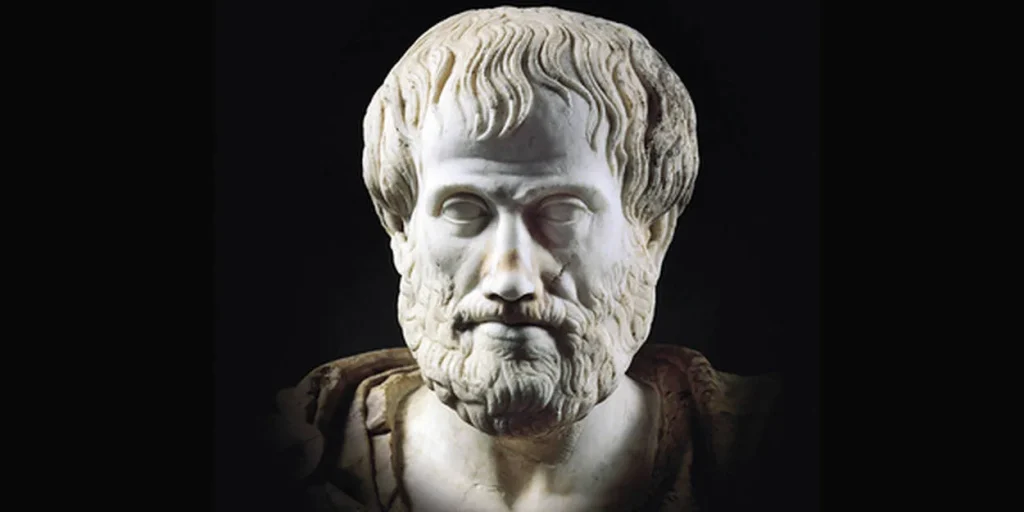
As the years unfolded, Aristotle’s intellectual path diverged from Plato’s teachings, leading him to gradually distance himself and even openly critique his former master. The ascension of Alexander to the Macedonian throne, coupled with the restoration of peace between Athens and Pella, served as a catalyst for Aristotle’s return to the city he had departed thirteen years prior. Fueled by a desire to establish his own academic institution, he founded a remarkable school that rivaled Plato’s famed Academy. This institution came to be known as “the Lyceum,” and it embodied Aristotle’s distinctive approach to education.
Aristotle’s teaching style was far from conventional. He was accustomed to engaging his students while strolling through the enchanting alleys of the gymnasium gardens. It was in this lively setting that his disciples earned the moniker of peripateticians, or “walkers.” The Lyceum offered a comprehensive array of disciplines, ranging from rhetoric and the art of public affairs to philosophy, natural history, and physics. The scope of knowledge extended even further, encompassing diverse areas such as medicine, mathematics, music, botany, and cosmology.
While Aristotle’s scientific achievements were monumental, his philosophical contributions were equally profound. Through his magnum opus, “Metaphysics,” he delved into the essence of existence itself, contemplating the meaning of being as being. This seminal work served as a cornerstone for medieval Jewish, Christian, and Muslim thinkers, shaping the course of theological inquiry. However, Aristotle’s intellectual prowess extended beyond the theoretical realm. He remained deeply engaged in political and moral discourse, advocating for the pursuit of a supreme good that would lead individuals to the pinnacle of virtue: happiness.
Tragically, the period of Aristotle’s intensive work was abruptly halted by Alexander’s untimely demise. The king’s death heightened anti-Macedonian sentiments, causing unrest to sweep through the hearts of Athenians. Finding himself at odds with his former pupil’s actions, Aristotle was compelled to bid farewell to Athens and depart with his family in 323 B.C. Seeking solace and refuge, he sought shelter in Chalcis, finding sanctuary in his mother’s ancestral home. Plagued by illness and sensing the imminence of his own mortality, Aristotle composed his last will, appointing Theophrastus as his successor to helm the Lyceum. In 322 B.C., at the age of sixty-two, Aristotle’s exceptional journey came to an end, leaving behind unfinished treatises such as “The Generation of Animals.” However, his intellectual legacy would endure, forever etched in the annals of human thought.
The cubert of Chapon square
Chapon Square, formerly known as “Place de la Petite Fontaine,” holds a rich history dating back to the site’s origins as a former oil mill belonging to the esteemed Pouverin ladies. In January 1757, faced with a dry and challenging summer, the municipality took the decision to construct a fountain, to be fed by the spring affectionately called the “Source de Gioffré.” To ensure fair and equal distribution of this precious liquid in each village neighborhood, a trustworthy man was appointed as the dedicated “water distributor” in 1761.
The fountain, nourished by a small local aqueduct, played a pivotal role in the daily lives of the locals, becoming an indispensable resource for their work and daily activities. Throughout the years, families occupied the apartments surrounding the square until the 1970s, and the vibrant ambiance of Chapon Square was enriched by the joyous cries of children playing in the shade of a majestic magnolia tree.
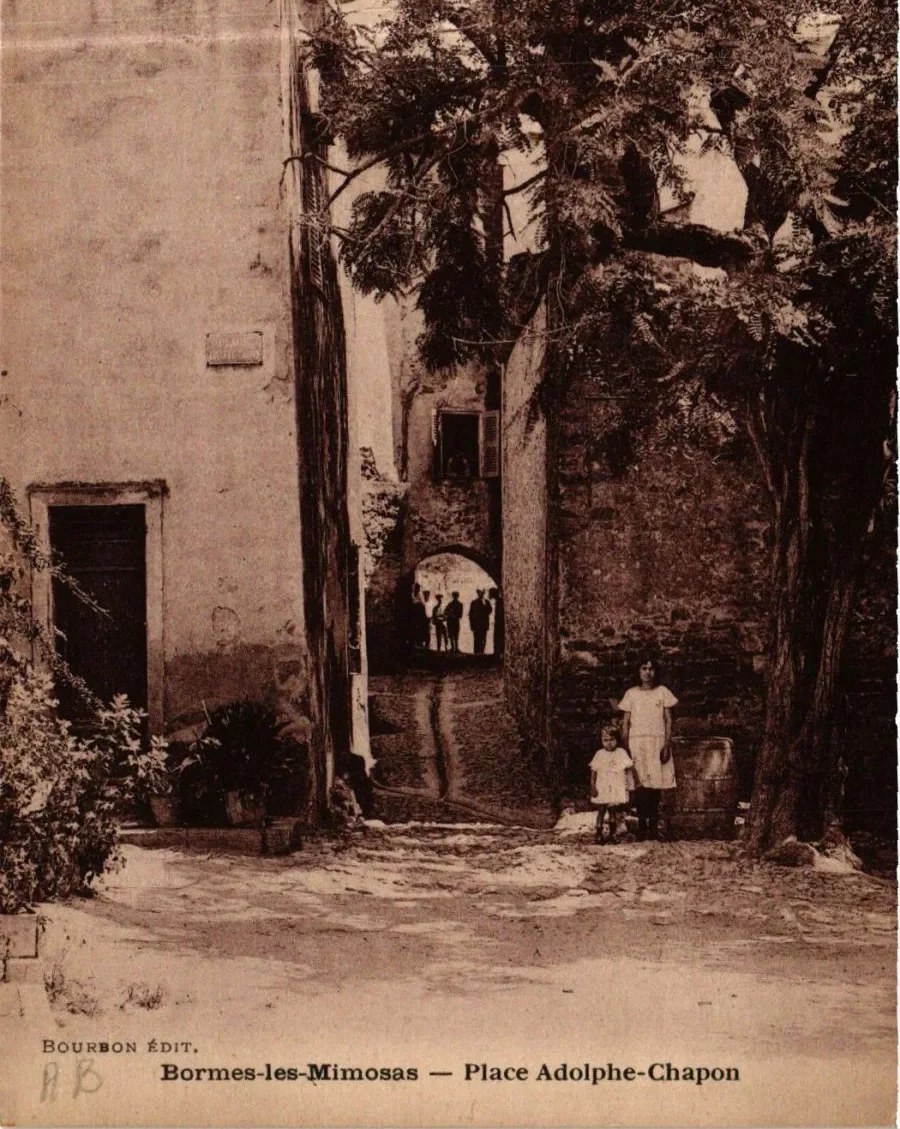
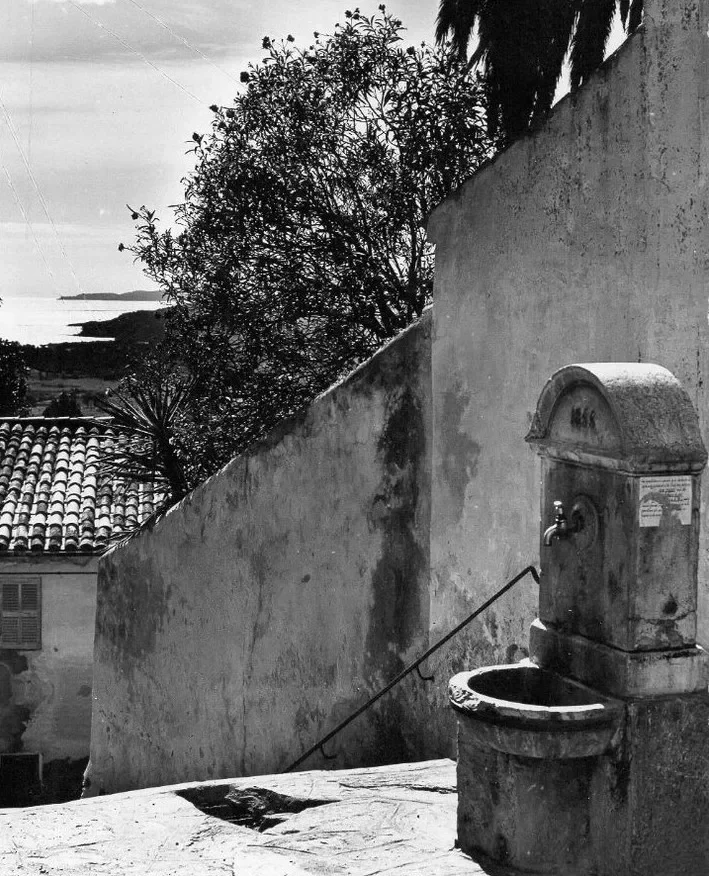
One fascinating highlight of the square is the charming small alley dedicated to cats, affectionately known as “la carriero dei gats.” From the enchanting little fountain, visitors are treated to breathtaking views of the surrounding plain and islands, enhanced by the brilliant blooms of bougainvillea.
Adding to the allure of the square, an intriguing anecdote revolves around a small cannon known as a pierrier, gracefully planted at the base of a quaint house. Originally designed for firing stone balls and commonly mounted on boats for close combat, the resourceful owner of the house discovered a new purpose for the cannon. Placing it strategically, the cannon now serves to protect the corner of the wall from any potential damage caused by the wheels of iron-rimmed carts.
The rich history and charming elements of Chapon Square make it a cherished place, deeply embedded in the hearts of the local community and a delightful destination for visitors seeking a glimpse of its unique character.

To experience the full splendor of the Chemin des Sages and delve deeper into the fascinating stories that unfold along this path, we invite you to explore the Baludik app.
Scan the QR code and embark on an interactive journey filled with games, surprises, and a deeper connection to the rich heritage of Bormes.


